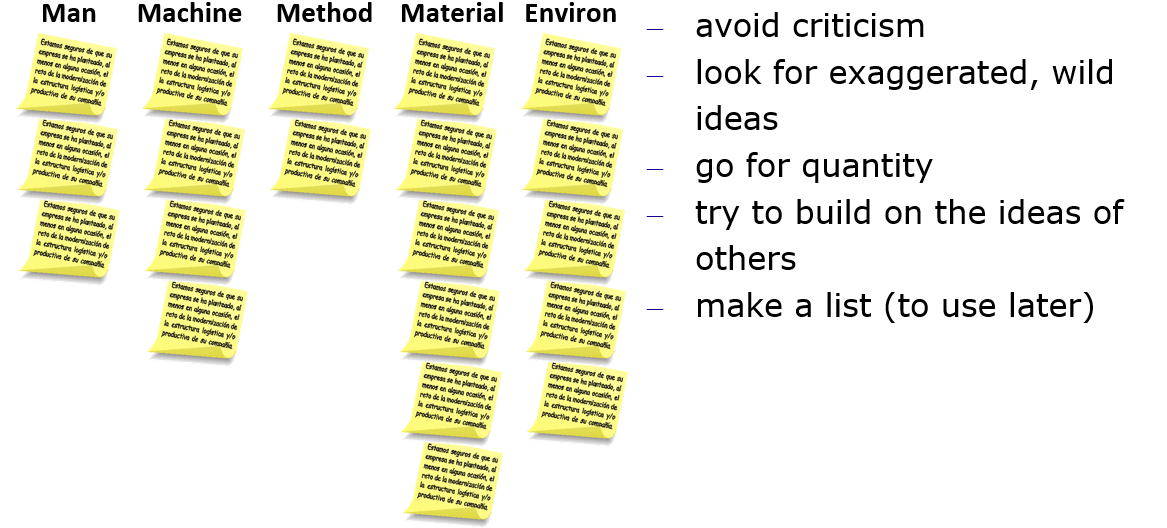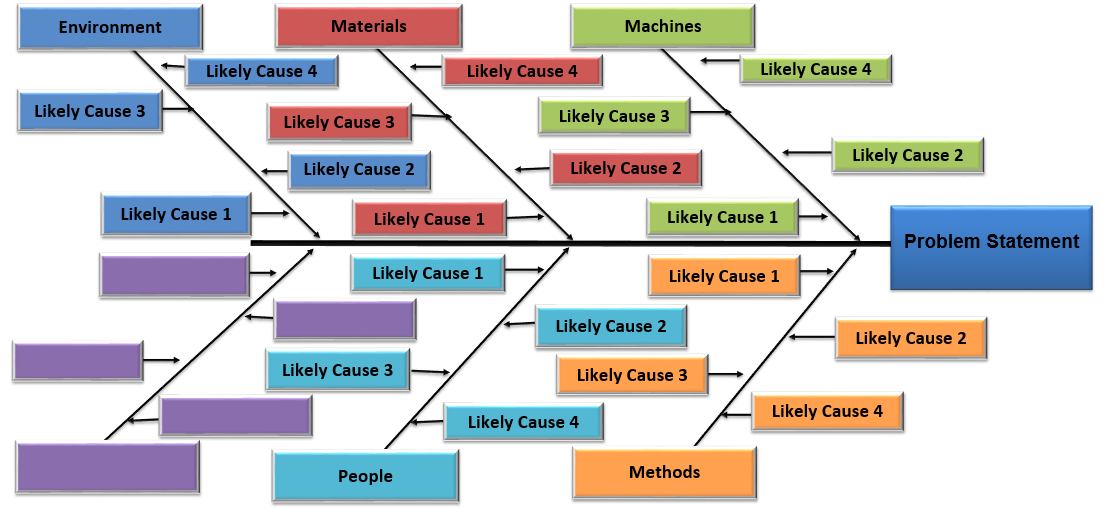TPM and Root Cause Analysis make a great combination and work to deliver sustainable solutions to the identification of what, how and why something has happened, thus enabling you to prevent recurrence.
TPM by its very nature is about identifying abnormal conditions and eliminating recurrence and with RCA now you have a formal structured approach that is easy to use and deploy on the shop floor.
Learning to understanding Problems and turning them into value:
Tomorrow’s experience
is based upon
Today’s analysis
Of
Yesterday’s failure
Some of the valuable outputs of RCA should be
- Improved business processes
- Better operating procedures
- Better maintenance procedures
- Focused condition monitoring
- New learning objectives
TPM and Root Cause Analysis – Some of the challenges for organizations without formalized problem solving
Making Assumptions
The Engilsh langauge is praticulalrly good for this. Just as long as the fisrt and last lettres are corrcet, our brian works out the snese of what we are triyng to read.
In a sense this is very much like how we develop solutions to problems without a structured approach such as RCA, often using our gut feel and experience to deduce the cause, I think you will agree that this approach is not going to be sustainable for complex businesses that wants to have autonomous workers who problem solve.
The Problem Solving Paradox
We never have resources, (Time, Money, People etc.), to do Problem Solving and to prevent the Problem from happening, but we always have resources to fix the Problem.
Why are we generally better at reactive problem solving?
Nobody gets credit for problems that never happen!
TPM and Root Cause Analysis – The process at a high Level
1) Develop a problem statement that clearly represents the symptoms your experiencing.
2) Identify what are all the possible causes across the following headings.
- Man – Is there something in the way people interact with the process that could cause the problem statement to exist?
- Machine – Is there anything about the machinery involved that could cause the problem statement to manifest
- Method – Is there a way that we do things that cause the problem statement to manifest
- Material – Is there anything about the materials we are processing that could cause the problem statement to manifest
- Environment – Is there anything about where the process is done or time of the year involved that could cause the problem statement to manifest
3) Brainstorming is a method used to create new ideas by suspending judgment and will aid you to discover possible causes

4) Agree as a group the 3 or 4 most likely causes from your list, utilize a priority matrix to aid in the decision making process and document.
5) Utilizing a fish-bone diagram is a great way to visualize your thinking process and helps teams to focus on the most likely causes, this is where you need to have a cross functional team who have both experience and technical expertise.

6) Experiment to prove or disprove that the selected likely cause results in causing the problem statement, this process is about validation of the groups thinking and should enable you to identify if your on the right track or not.
7) Once experimentation supports your analysis, create a counter measure to prevent recurrence.
We really hope you have found this article of value and that it has inspired you to learn more about TPM and Root Cause Analysis, just remember the hardest part of any journey is getting started but once begun you will learn it’s an enjoyable and rewarding experience that can improve your organization’s culture and performance in a very positive way.
“Operate at your optimum with Weigh Label”
